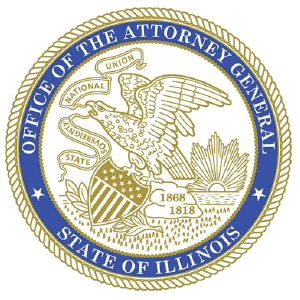James Craig Hagan
To most, Father James Hagan “was the cool addition to the church,” the “pastor that changed the tide . . . he was beloved by everyone.” But a darker truth lurked behind this sunny façade. For nearly two decades, Hagan used his position as a beloved priest in the community to repeatedly sexually abuse more than a dozen young children and teenagers.
There is evidence that Hagan’s abusive behavior may have begun as early as 1972, during his time at seminary. Later investigation found reasonable cause to suspect Hagan had fondled the buttocks and genitals of an 11 year old child on at least one occasion during that year. Hagan appears to have struck a second time about five years later. In 1977, three years after his ordination in 1974, Hagan found a new, 12 year old victim, who allegedly was subjected to “fondling and masturbation” on “numerous” occasions over the next six years.
By the mid-1980s, Hagan’s actions were becoming ever more frequent, more blatant, and more brutal. The Archdiocese of Chicago’s records show he likely began to sexually abuse three more children in 1981 and an additional three children in 1982. By 1985, Hagan may have been actively and simultaneously abusing and raping as many as eight different children, including through forced fondling, masturbation, and oral sex.
Hagan’s actions nearly came to light in 1988, when allegations of child sex abuse were brought to the attention of the archdiocese and law enforcement by parents concerned over the way in which Hagan was teaching a sex education class. But Hagan’s brush with the law did not prevent his predatory behavior; rather, it continued without pause. In 1988, he arrived at a new parish, Saint Denis in the Ashburn neighborhood of Chicago. Hagan would work there as a pastor through 1996.
Benn Jordan, who asked that his real name be used, is a survivor of Hagan’s abuse in this period. He was an elementary school student and altar server at Saint Denis in the late 1980s. He was glad to have Hagan as a member of the community and looked up to him. “He was almost the type of figure where you are happy he knows you by name,” Benn recalled years later.
The first time Hagan targeted Benn was in a bus, on the way back from a field trip. “Hagan sat next to me, put his hands between my legs,” remembers Benn. After that, the abuse escalated. Hagan exposed himself to Benn in the bathroom and then forced Benn to masturbate him, letting him leave only when Benn said his family was waiting to pick him up. In a third attack, Hagan fondled Benn and forced him to perform oral sex. The abuse continued for several months. “I stopped caring in a weird way,” Benn recalls. “I had what I now understand is depersonalization.”
“He was almost the type of figure where you are happy he knows you by name,” Benn recalled years later.
While Hagan stopped actively abusing Benn after several months, Benn’s life would never be the same. He started acting out in school—“I brought a switch blade, stopped doing my homework.” Soon Benn began to get panic attacks, which made it made it difficult to be in school. He dropped out as a teenager, before completing his high school degree.
As Benn suffered, the archdiocese continued its support for Hagan. In December 1991, the vicar for priests reached out to Hagan directly about a new archdiocesan initiative “to review all cases of alleged or real child abuse in our archdiocesan records.” “I want to set your mind at ease a bit,” the vicar wrote. “One of those cases was the situation in which you were involved in May of 1988. . . . As far as they were concerned, the incident is closed. . . . We can put it away for good now.”
But the archdiocese was wrong; the truth could not be put away. In early 1996, several survivors stepped forward with allegations that Hagan had abused them as children. Their testimony was so powerful the archdiocese could no longer brush aside Hagan’s monstrous acts. In August 1996, he was forced to resign as pastor of Saint Denis, and in April 1997, he resigned from the priesthood entirely.
The archdiocese has never truly grappled with its role in Hagan’s crimes. In May 2005, Cardinal Francis George issued a declaration that “the Archdiocese does not consider itself in any way responsible for the activities of James C. Hagan” and “is not to be held liable for any scandal or harm to souls for which he has been or is responsible.” Meanwhile, Benn wonders whether the church is doing enough to ensure what happened to him never happens to another child. “This is a systematic problem,” Benn insists. “The church needs to hire psychologists to examine priests. We need to intervene as much as possible . . . [to] prevent future incidents from happening.”
Hagan was finally laicized in April 2010. As of that date, the archdiocese had substantiated 11 allegations of sexual abuse and concluded there was “reasonable cause to suspect” Hagan had abused several more children.
